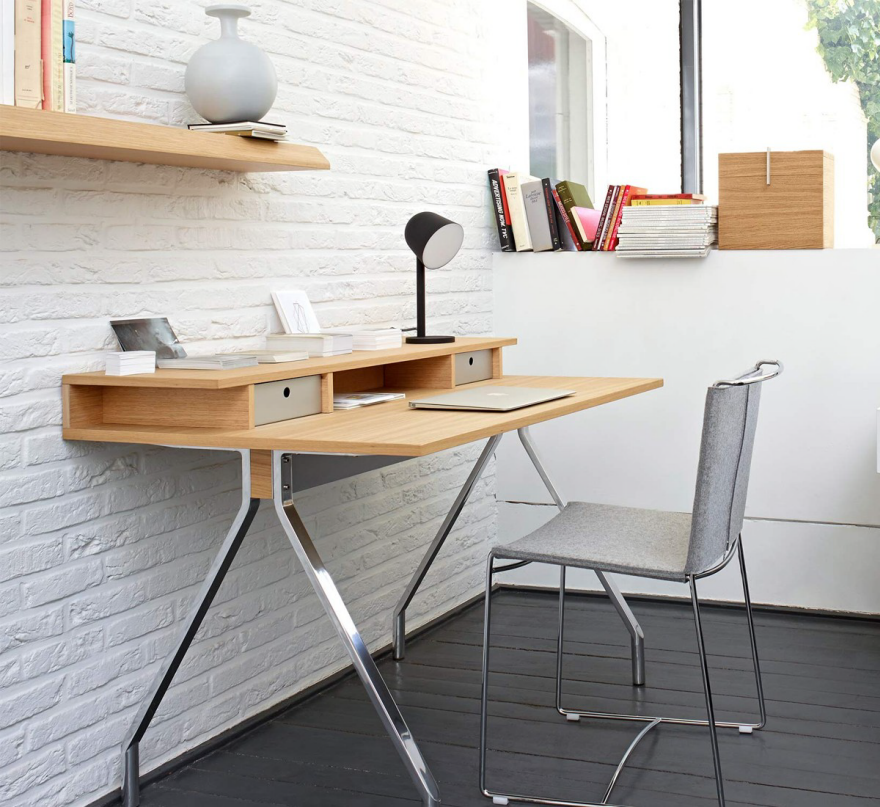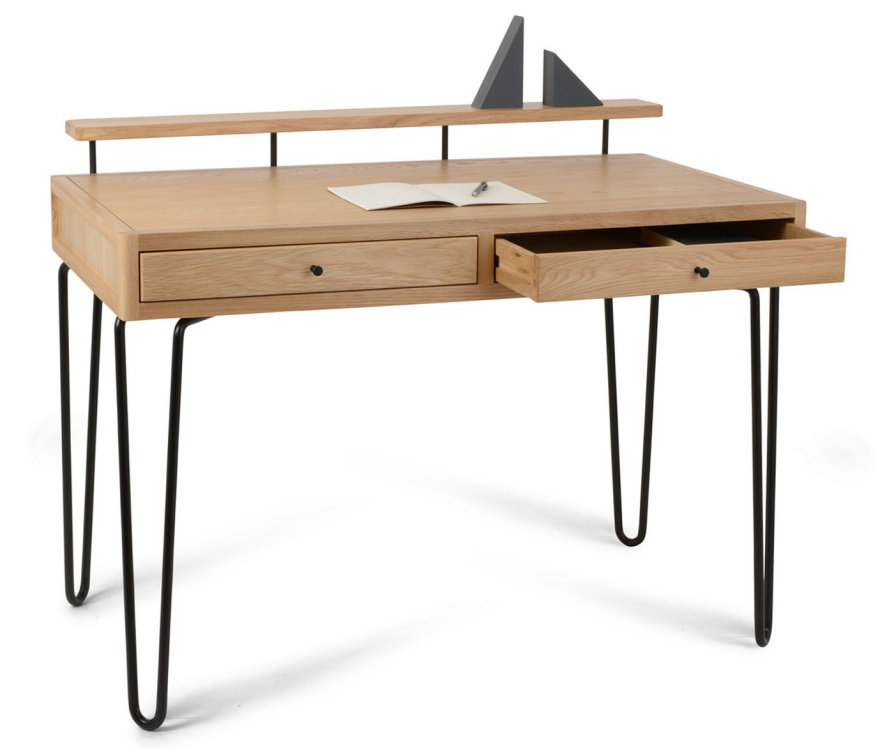#HTE
Organizing the Office: Desks With Storage
Many desks on the market now are basically tabletops; there are no drawers or other storage mechanisms. But as I’ve noted before, many end users still need to keep a few things besides a computer close at hand—pencils, notepads, files, paper clips, etc. And there are many ways to design a desk to provide a bit of storage for such users.

The Mateodesk from Ligne Roset, designed by Marc Berthier, provides storage at the rear of the desk. The optional drawers are nice for end users who like things hidden away; those who like their storage more visible can just use the cubbies without the drawers.

Cabling has been considered, too. As Ligne Roset explains, “The central space between the drawers is closed by two removable covers, facilitating connections and concealing the multiway plug and cabling.”

The only drawbacks: Since the storage compartments take a fair amount of desktop space, there’s less space available for a large item. And the end user needs to reach around anything that’s on the desktop to get to the storage. This is a desk that’s best for someone who will be using a laptop and no other computer or monitor.

The Esme desk, available from Made, also uses rear storage. Its cabling solution is simpler, with a big round hole to run cords through. That will work fine for many end users, but some will find it inelegant—and anyone who was looking for a desk to use without any computer would probably give this one a pass. The back of the desk extends a bit above the back shelf, which may help keep things from falling off.

The Origami desk is part of the Mr. Marius collection from Ethnicraft. It combines rear storage with a few drawers, and it seems to also have a shelf under the desktop where a laptop could be stored when not in use. (Of course, other things could be stashed there, too.) Having multiple storage options of varying sizes is nice; the front drawers are large enough to hold stationery and other paper.

However, laptop users will note that this desk does not provide any accommodation for cables. Given the enclosed nature of the desktop, that could be awkward (unless the end user is okay with drilling a hole or two). Maybe that’s why the company’s photos show the desk with a typewriter, not a computer.

The Brunel desk from Heal’s, designed by Rob Scarlett, combines drawers with a rear shelf. That shelf (which is 15 cm deep, a bit under 6 inches) won’t work for all end users; anyone with a cat can imagine how things will get knocked off on a regular basis.

The Cosimo desk from Adentro provides storage with both a shelf and some drawers. That center section can be either tempered glass or more of the lacquered finish, so the storage can be more or less hidden, as suits the end user’s organizing style.

The drawers have a pencil/pen tray, which is a nice touch. I might have preferred that tray be a bit larger, though, so it could easily fit more than one pen.

The Cupertino desk from BoConcept provides both storage and cable management.

The storage compartments lift up; the center section is hanged, while the side compartments have removable lids. Two types of end users might find these awkward to use: those who tend to spread papers and other items all over the desktop when they work and those who want to put something heavy (such as a computer monitor) on the desk. But the compartments provide a lot of storage for those who wouldn’t have either of those issues.
Note: Those grey items behind the storage compartments are the optional Bluetooth-enabled speakers.

The removable cover sections in the center rear make it easy to deal with any cables.

The Wynd writing desk from Piet Houtenbos uses a storage tray rather than a drawer. There’s no need to push away from the desk to get to the items stored, as there would be with a center drawer. It’s an interesting design, but no one I know is really bothered by the process of opening a center drawer.


The Brooklyn desk from Oeuf uses movable storage boxes of varying sizes placed around the perimeter. This is a child’s desk (which can adjust in height up to adult size), but there’s no reason the same clever design couldn’t be used on a standard adult desk.

The Inlandsis desk, designed by Mathilde Roman and Pauline Androlus, keeps everything on the desktop—but it uses pegs of varying heights to keep things upright rather than horizontal. That won’t work for everything—spare printer paper, for example, is better stored flat. It’s better suited to storing things like files and books, and perhaps incoming mail.

But there’s a limit to the flexibility, since of course the pegs can only go in the designated places—so the end user might not be able to create a space as narrow or as wide as desired. And if not all the pegs are used, the end user would have little holes in the desktop surface. All in all, this design could require a lot of fiddling around to make things work; using things like bookends and desktop files might be a lot simpler and more effective.
http://www.core77.com/posts/46870/Organizing-the-Office-Desks-With-Storage
